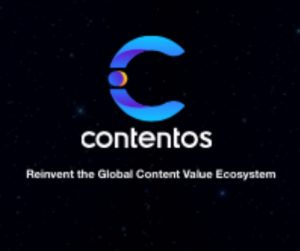 The digital content space has a host of problems related to transparency, centralization, and hype, making it difficult for creators to deliver and receive both actual value to users and rightful revenue from platforms that distribute their content. Newly developed blockchain use cases in the industry are emerging to combat these problems.
The digital content space has a host of problems related to transparency, centralization, and hype, making it difficult for creators to deliver and receive both actual value to users and rightful revenue from platforms that distribute their content. Newly developed blockchain use cases in the industry are emerging to combat these problems.
________________________________________________________________________________________________
Digital Content Is a Mess
The digital content industry is opaque and unaccountable. Ownership of digital content has long been hard to verify, making transactions unnecessarily complicated because of arcane copyright transfer methods, creating otherwise avoidable copyright disputes around unregulated derivative works. Worse, the entire industry is platform-centric: creators earn much less from their own work than distribution channels like Youtube or Tidal, any of which can change their revenue-sharing models whenever they want. And, since such platforms direct users’ content experiences through matching algorithms based on previous views, individual users’ level of interest in different types of content is not always clear, forcing creators to cater to unclear user interests possibly developed in the digital echo chambers these situations tend to create.
How To Clean Up Digital Content
As in the recording industry, where record studios frequently take ownership of artists’ master recording rights, so in the digital content industry do distribution platforms gain the lion’s share of revenue produced by their partner creators. The answer to this problem is to decentralize proof of ownership, copyright, pricing and revenue-sharing in and of digital content. The technology most capable of doing this is blockchain. A decentralized, trustless, immutable digital ledger enabling self-executing (or, “smart”) contracts, transparent and open-source auditing of transactions, blockchain disintermediates supply and value chains, opening up and standardizing revenue distribution and ownership verifiability. By opening up more revenue and autonomy to creators, blockchain technology can improve industry working conditions, as well as production standards and expectations for creators.and platforms alike. The time has come for a decentralized global ecosystem for digital content enabling its free production, authenticating copyrights, distributing it and transacting around it openly, allowing creators to retain the rights to their work and its value.
The Market
Global advertising revenue from digital content reached $500bn in 2016 over 1.7bn live-streaming app users, with 17% of revenue and viewership originating from China. Growth in mobile video consumption, accounting for 55% of all video consumption in 2015, will account for 75% of all video consumption in 2020–an almost 25% increase. So, too, will the volume of mobile video users penetrating the space increase–from 22% in 2015 to 34% in 2020.
Traction of Blockchain Use Cases in Digital Content
The application of blockchain to the problems surrounding the mobile digital content industry has many potential benefits. With the blockchain’s key attributes of disintermediation, open-source verifiability and transparency, it enables copyright authentication, transaction, and attestation of mobile digital content. It also makes immutable transactions and derivative works unalterable, while simultaneously enabling copyright verification and disabling track infringement using timestamps on the blockchain. Mobile digital content on the blockchain would also decentralize income distribution between creators and users, disintermediating the industry by removing the need for distribution platforms, allowing creators and users to transact between each other. It would also distribute income based on content value and user contribution, delivering more value to creators and greater access speed to users.
Among the use cases delivering value in this space, Contentos stands out. Contentos is a blockchain-based decentralized global ecosystem for digital content, enabling content to be freely produced, authenticated, distributed, and transacted. It is a global creator community and a shared content ecosystem between users and creators, where users and creators can communicate and transact with one another instantly and freely without intermediaries. Pricing is open and transparent while credit is based on usage and participation. With industry-leading strategic partners like LiveMe, Cheez and PhotoGrid, Contentos has the potential to reshape the mobile digital content industry by opening up revenue circulation and validating viewership and intellectual property, creating an ecosystem where every creator is fairly rewarded for their work and every user is given maximum access to creator content without having to go through paywalls or activate troublesome subscriptions.
Blockchain use cases like Contentos in the digital content industry are changing the industry, and the application of the technology will lead to greater transaction and viewing speed, clarity, and verifiability. Yet to be competitive, such apps will need to partner with existing companies that stand to gain from blockchain integration instead of platforms that separate users and creators. Apps that can do this will come to lead the industry in the next 10 to 20 years as blockchain technology becomes more and more mainstream.
________________________________________________________________________________________________
What are your thoughts about digital content on blockchains? Creators, could it improve your process and earning potential? Consumers: could it improve your listening and viewing experiences? Post in the comments below and let us know!
Image(s): Shutterstock.com
